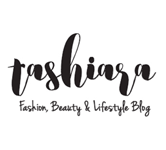Add AHA and BHA acids to your routine. 3 things to know.

Skin actives like AHA and BHA acids have seen a rise in purchases since we started to spend more time with ourselves. Ever since the pandemic, we have been conditioned to look at our faces. In all kinds of harsh, soft, loud, dim lighting, we can’t help but feel the urge to control all that’s wrong or make skin look brighter and better, because if there is one thing the pandemic and social media have done collectively it is to convince that the way we are is not enough.
From mask chafing to increased body inflammation to endless zoom meetings, your body and your skin have been through a lot. And in these moments of forced isolation, many bought off-the-counter ski actives like AHA and BHA acids without a prescription or any real direction to how and when to apply them. Could these ingredients be coupled with your current skincare routine? could these be used in the morning or the night only?
Here, we answer all those questions in unison and answer everything about AHA and BHA acids.
1. What are AHA and BHA acids?
AHA (alpha hydroxy acids) are derived from animals and sugary fruits. They are water-soluble acids. Thus they are capable of only removing the outer layer of dead skin cells. Thus, can be used for normal to dry skin.
They are popular ingredients in popular cleansers, serums, and moisturizers.
AHAs are focused on exfoliation by dissolving the skin cells on your skin. They work in removing dead skin cells and promote newer skin underneath. Thus, they are most popularly prescribed for treating hyperpigmentation, wrinkles, buildup, and even acne.
The most popular AHAs are Glycolic acid and Lactic Acid, the former being the strongest one, and the latter being famously used by Cleopatra in her milk baths.
BHA (beta hydroxy acids) is derived from willow bark. It does all of the same things that an AHA does without being harsh on the skin. his synthetically derived active is oil soluble, unlike AHAs.
Thus, they penetrate deeper cause they can interact with the skin’s deeper layer and can cleanse out clogged pores.
BHAs are best-recommended for people with sensitive skin and ones with oily or combination skin. The most popular BHAs are salicylic acid and citric acid. They work mildly for the same effects on sensitive skin.
2. Precautions for AHA and BHA acids
AHA and BHA acids are to be used carefully. You must make sure you are aware of the type of skin active you are applying, and whether or not it fits your current skincare routine.
Other than that you need to ensure that the percentage of AHA or BHA present in the product is less than 10%. Anything more than that could deeply strip your skin of its natural barrier. Overdosing of AHAs and BHAs is what causes people a compromised Skin Barrier.
Skin Barrier Protection is absolutely imperative because this is what keeps the good stuff in and the bad stuff out. To make your skin more tolerable to external bacteria, irritants, pollutants, and even your ‘gentle’ skin care, you would require a strong and hydrated skin barrier. AHAs and BHAs, when used wrong, can destruct the skin barrier and aggravate your skin issues even further.
3. Which AHA and BHA acids for which concern –
- For Mild Exfoliation – Use Glycolic Acid. Look for milder concentrations like 2%, if you’re a beginner. And if you have sensitive skin, use it once a week, and then build on the dosage and concentration.
- For Acne – Use gentler AHAs like Mandelic Acid and Lactic acid for exfoliation and pore cleansing. Use the BHA Salicylic Acid for targetting sebum production in pores.
- For fighting hyperpigmentation: Use Kojic Acid for fading dark spots. Do not combine Kojic acid with Vitamin C. Vitamin C is for the AM and Kojic Acid is for the PM. Along with that, be mindful of your skin’s resistance to these acids.
- For wrinkles: Use Glycolic Acid. It suits maturer skin and unearths new skin while aiding in collagen production under the deep skin layers.
These potent AHA and BHA acids are effective but only when used correctly. Along with that, you must always consult a dermatologist for the recommended dosage and concentration that will work for your skin and lifestyle. Here is a light reading on what before using actives like AHA and BHA acids, you must see why organic products work. Remember that exfoliants have a potent talk to dry out your skin and make it more susceptible to sun damage. Appropriate hydration and sun protection must follow along after using these skin actives.








